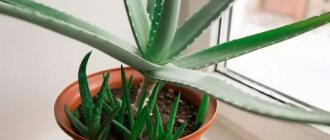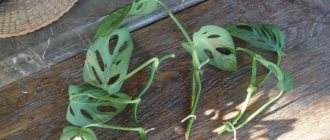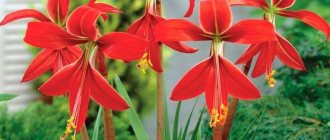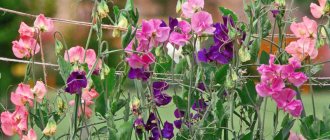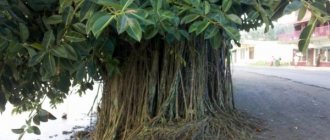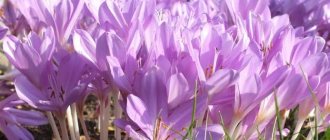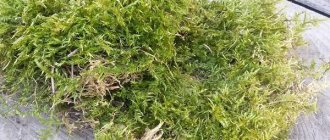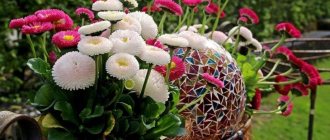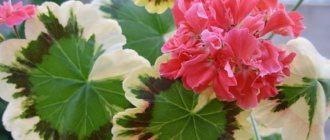A few words about begonias
There is a belief that begonia has a certain magic: everyone who sees this plant falls in love with it at first sight. It is not surprising that begonia has attracted your attention. This note describes the features of caring for begonia at home. This indoor plant comes in various types, but they are all divided into flowering and decorative deciduous.
Blooming begonias are distinguished by their colorful flowers, fluffy to the touch, in various colors: from red, white, pink, yellow and their various spectral shades.
Decorative foliage crops are distinguished by a variety of colors of beautiful leaves, small flowers or their absence. The most common plant among flowering species is terry begonia mix. This exotic culture can very often be found in flower shops and, of course, it is difficult to pass by and not purchase it.
Memo to the florist
Knowledge about the general characteristics of all types of begonias will help you properly care for them.
- The plant does not tolerate heat (above +20°C) and winter cool indoors (below +15°C).
- All begonias do best in moist air. Containers of water near the pot or misting the air close to the plant will help deal with dry air from central heating.
- Do not allow water to stagnate after watering. Watering should be plentiful.
- Begonia enjoys bright light, but not direct rays of the sun.
How to transplant nolina? Be sure to check out this material.
Why doesn't it bloom?
There may be several reasons why begonia does not bloom: lack of lighting; incorrectly selected soil mixture; incorrect transplantation; eating disorders; violation or absence of a rest period; dry air; pest damage; violation of watering (severe dryness or watering with hard water).
Features of caring for begonia mix
If you become the owner of a flowering begonia, you need to familiarize yourself with the features of caring for this plant at home. After all, this exotic culture is very capricious. Even the time of purchase of terry mix begonia and its transportation significantly influence its adaptation to the new habitat. It is advisable not to purchase begonia during cold weather, because it may not survive sudden temperature changes between the street and the room.
It is better to place the plant on a windowsill on the southwest or southeast side to avoid direct sunlight that is undesirable for the flower. If you place the begonia correctly, then throughout the spring and summer you will watch it bloom. Closer to the cold field, the plant bulb pauses the growing season and remains dormant until it warms up.
Detailed description
Begonia terry mix plant. The most popular ornamental plant, which amazes with its variety of shapes, sizes, shades and has several thousand varieties. Begonias are annual and perennial, grown both in open and closed ground. The pleasure of admiring them in the garden outweighs any labor costs in growing these delicate beauties.
In the spring, begonia tubers are planted in boxes with moist peat, and the upper part of the tuber should not be covered with soil. Then the tubers are planted in pots, and in June you can start planting seedlings in open ground.
Lighting.
The plant prefers warm sunny places or partial shade with a constant flow of fresh air, and does not tolerate direct sunlight. A sharp change in lighting is harmful for begonias.
Watering.
In summer, the plant needs abundant watering with warm, settled water, especially during flowering (from late May to frost), as well as fertilizing with mineral fertilizers. Between waterings, the earthen ball should dry out slightly. In autumn, watering is stopped. When the time comes for the first frost, the begonia must be dug up, the stems cut off, dried and kept in a cool, dry room until the beginning of spring, preferably wrapped in newspaper or in pots with sand.
Reproduction.
Begonia is propagated by seeds, cuttings and tuber division. — Diameter: 12cm. — Plant height: 35cm.
Caring for begonia after the flowering period ends
It is recommended to reduce the amount of watering and fertilizing. When the leaves begin to fall off, the pot with the begonia should be moved to a dark room, where it will be in complete peace at a temperature of 10-13 degrees, and watered periodically. With the arrival of spring, the plant can be moved to its original place and watered more often than in winter. Do not forget that begonia is quite whimsical, so you must adhere to the following rules:
- The plant is adversely affected by drafts and changes in location. Therefore, determine which room is more suitable for the begonia, and do not disturb it by moving it.
- Watering should be moderate and regular. It is not recommended to flood the plant.
- It is strictly forbidden to spray begonia leaves, otherwise they will become covered with dark spots and begin to crumble.
- The soil for the plant should be loose and nutritious, and good drainage at the bottom of the pot will protect it from souring.
- If you do not follow the rules of caring for begonia, this may affect the plant in the form of some diseases.
Diseases to which begonia mix is susceptible
Begonias can suffer from various types of diseases. Pay special attention to the appearance of the plant:
- White coating on the leaves is a symptom that indicates the appearance of powdery mildew. To eliminate the problem, it is necessary to remove the affected leaves and spray the begonia with a fungicide. Frequent ventilation of the room in which the begonia is located is also mandatory.
- Leaf curling is a sign of normal natural leaf dieback. But if darkening of the leaves is observed, this indicates a lack of nutrients. Also, this may be a consequence of improper watering of the plant: either scanty, or, conversely, too abundant.
- Brown spots and holes in the leaves are most likely an indicator that water that is unsuitable for the plant is being used: too hard and cool.
- Darkening and dying of begonia flowers is the result of careless watering and water getting on them. Sometimes this can be the reason why the air in the room is too dry.
- Leaf sticking together and becoming covered in lumps is one of the main signs of aphids. There are many ways to combat this pest. For example, spraying a plant with celandine or onion tincture.
- Envelopment in a thin web is a sign of the appearance of spider mites. To fix the problem, you need to wipe the leaves with a damp sponge, paying special attention to the underside. It is also necessary to increase the air humidity in the room, remove dead leaves and flowering products.
Pests and diseases
Terry begonia is sensitive to violation of care and planting recommendations. May be susceptible to disease and pest damage.
- A white coating on the leaves may indicate powdery mildew. In this case, it is necessary to remove the damaged leaves and treat with a fungicide. Ventilate the room more often. Begonia does not like stuffy rooms.
- If clots form on the leaves and stick to your hands, the flower is damaged by aphids. Treatment with celandine infusion or onion decoction helps well.
- A thin web indicates a spider mite infestation. It often appears in apartments with dry air. Install a humidifier and ventilate the room more often. Wash the plant with a damp sponge. You can soak a cotton ball in a soap solution and carefully collect the cobwebs. Severe damage will require treatment with insecticides.
- The plant can be damaged by gray rot (especially when grown in greenhouses). High temperature with high humidity is a favorable environment for its occurrence. White watery spots with a grayish coating form on the tips of the shoots, flowers and leaves. They soon turn into brown rot. The stems rot, the leaves curl and turn black. The method of control is spraying with 1% Bordeaux mixture.
Other problems:
- If the begonia leaves begin to curl, the old leaves may be dying. This is a normal physiological process.
- If the leaves curl and darken, the begonia is not getting enough nutrients.
- Fallen and darkened leaves are the result of exposure to water or too dry air in the room. Flowers may also begin to fall off if water gets on them during watering.
Begonia Terry is preferred by many gardeners. It attracts attention with its decorative appearance and charming long-lasting flowering. If you decide to grow it at home, be sure to read the basic care recommendations. Begonia is a sensitive flower, demanding attention and care. But the work will be rewarded! If you give her your care, she will delight you for a long time and will become a real decoration of your home!
Next you will see photos of how to care for the ever-blooming terry Begonia at home:
How to care for Begonia Elatior so that it pleases the eye even in winter?
Autumn and winter are a time of depression, when nothing makes you happy. To get rid of the blues, it would be nice to get a wonderful plant - Elatior begonia.
When you see an unsurpassed bright bush, your bad mood will instantly disappear. Such lush, multicolored flowering in the midst of frost and cold is rare in plants. It’s not for nothing that this variety is called “winter.”
You will learn more about this plant, what it looks like, how to care for and propagate, as well as what diseases and pests can worsen the appearance and health of the flower.
Ampelous begonia
Tuberous begonias have a subspecies - ampelous, or cascading, or pendula (Begonia tuberhybrida pendula), we will dwell on it in more detail. This type of begonia has long shoots from 30 cm to 80 cm or more, as well as inflorescences located on long peduncles. In this subspecies there are plants with simple and double, small and large flowers. The stems of ampelous begonia are quite fragile. It is usually placed in a hanging pot or flowerpot on a high leg so that the branches hang freely. They form magnificent cascades with a large number of beautiful hanging flowers of various colors. These plants are widely used in vertical gardening. The photo will show without exaggeration how beautiful the ampelous tuberous begonia is.
Let's name some varieties of hanging begonia. Stunning huge double flowers of the Splendide variety series: white-pink, apricot-cream, iridescent pink, hanging on very long peduncles, cause admiration. A magnificent Illumination variety series, the plant forms a dense “waterfall” of long 80-100 cm branches and many wonderful double flowers of various colors (about 7 cm). The varieties “Venus”, “Bella”, “Expectation”, “Carmen” are very beautiful.
You have already seen what an unusually beautiful flower the tuberous begonia is. Now we need to figure out how to propagate and grow them.
Appearance and characteristics of the plant
The begonia variety Elatior is a hybrid , bred at the end of the 19th century in England. Its ancestors were the Socotrans and tuberous varieties of begonia. In the future, this made it possible to obtain hybrids with non-trivial flowering and excellent decorative properties.
During this period, Holland is considered the mass producer of Elatior plants. There, flowers are bred in greenhouse and indoor conditions, obtaining new species that are more resistant to fungal diseases. Dutch begonias are transported to European countries, Russia, and America. Plants are used for landscaping.
The winter begonia hybrid is an annual shrub with densely flowering inflorescences. The maximum flower height reaches 40 cm .
The plant has a dense, developed stem, as well as asymmetrical heart-shaped foliage. The leaves have a rich green color on top, while the bottom part is light green. The size of the flowers is up to 8 cm in diameter.
Tuberous begonia and its subspecies
Tuberous begonia (Begonia tuberhybrida) is one of the species of the large begoniaceae family. This is a southern guest from the tropics, who in the 19th century came to Europe and settled permanently. The cultivation of begonia and its selection originate in Belgium, which, since 1867 and to this day, has been the leader in the cultivation of this plant.
Thanks to the work of breeders, double varieties with large and small flowers appeared, having warty, folded, jagged, fringed and dissected petals, flowers with a contrasting border and various new shades.
Tuberous begonias are herbaceous perennial plants in which a tuber with fibrous roots is formed below the root collar. The tuber of an adult plant is round-flat, irregular in shape, about 5 cm in diameter, with a small depression on one side. Renewal buds are formed on the tubers.
The stem is fleshy, juicy and quite fragile, green in color (may be slightly reddish), all covered with thin fibers. It grows on average from 15 to 35 cm. Tuberous begonia branches weakly.
The leaves are asymmetrical in shape with a pointed tip, located on long pubescent petioles. They have well-defined serrated venation. Anthocyanin pigments are present in the dark green color of the leaves of some varieties.
The flowers are heterosexual, form small inflorescences (up to 5 pieces). They are very diverse in their form. In addition to simple ones, there are terry and semi-double ones of various colors. The size of the flowers (depending on the variety) varies from 2 to 20 cm.
Yellow-orange small seeds (they are slightly larger than those of the ever-flowering begonia) are hidden in the fruit - a triangular winged capsule. Terry varieties often do not produce fruit.
Currently, tuberous begonias are usually divided into the following groups:
- Small-flowered (Multiflora) - flowers can be simple or double, the size of which is 2-5 cm.
- Medium-flowered (Multiflora maxima and Bertini) - flowers from 5 to 10 cm.
- Large-flowered - the size of flowers is from 11 to 20 cm, they can be simple with warty, folded, giant and bordered petals, as well as double with fringed, peony-shaped, rose-shaped, narcissus-shaped and camellia-shaped forms.
- Ampelous begonia (pendula, cascading) - flowers ranging in size from 2 to 8 cm are simple and double, shoots with flowers are long from 25 to 100 cm.
And now we invite you to get acquainted with some of the many varieties. You will see what kind of tuberous begonia there is, the photos will objectively illustrate this.
- Bouton de Rose - pink-shaped begonia, flower diameter on average 15 cm, white petals with a rich pink border, in the middle are collected into a bud resembling a rose.
- Double - variety series of peony begonia, flower size 10-12 cm, comes in several shades of red, white, pink, orange, yellow.
— Daffodil Salmon is a striking representative of the narcissus begonia of amazing salmon color and unusual shape.
— Camelia Flora pink-white — camellia-shaped begonia of an unusual red color with a white tint along the edges, has the peculiarity of blooming even in a heavily shaded place.
— Fimbriata is a fringed, highly double variety series, the flowers are very reminiscent of carnations, the colors are pink, orange, red, white, yellow.
— Crispa Marginata is a variety series with folded flowers with a wavy edge, the flowers are yellow with a red border and white with crimson (10-12 cm in diameter).
— Cristata yellow is a representative of warty varieties, a simple yellow flower about 11 cm, the vein in the center of the petal has a fringe-like outgrowth.
— Multiflora Maximum is a medium-flowered variety series with double flowers of white, yellow, dark pink, red and dark red colors, about 7 cm in diameter.
- Bertini Skaugum - low bushes with bending branches, strongly bushy, flowers 5-9 cm of varying degrees of doubleness, red-orange in tone, white, pink, yellow are less common.
Among the small-flowered multifloras one can name the varieties Frau Helene Harms, Ami Jean Bard, Bergermaster, La Madelon, and Yellowhammer.
It will be useful to read:
Growing Everflowering Begonia Very often, when begonia is mentioned, a houseplant grown in pots and cache-pots comes to mind. And we don't even...
Varieties
With conscientious care, begonias are capable of abundant flowering throughout the year. It is these subspecies that grow indoors, as well as outdoors in the warm season.
Frequently sold varieties:
But still, among the brothers of the Elatior variety, I would like to especially highlight the following representatives:
- Borias . A popular species among amateur gardeners, as well as in flower farms. And this is not strange, since the plant has a very long flowering period. The shape of the bush is neat, quite compact. The foliage is shiny, rich green. The inflorescences are pale pink with a white stripe along the edge. Flowers with double and smooth texture. The hybrid often decorates the premises of shops, offices, and cafes.
- Begonia Mix . It is a medium-sized plant, up to 30 cm high. The foliage has jagged edges. Flowers are arranged on several tiers. The shades, unlike the previous representative, are varied. Red, white, yellow, pink, orange. Due to the small size of the bush, this species is often called a “bouquet in a pot.”
Appearance Features
It grows as a subshrub (you can find out about the varieties of bush begonia here). Well developed root system. Tuberous begonia can grow in open ground.
The lush foliage is uniformly green; the leaf itself has an asymmetrical shape with jagged edges. The flower is large, similar to a small rose. Blooming begonia mix has double inflorescences of red, yellow, pink, white flowers or with a border of various shades along the edges of the petals. You will find an overview of all varieties with bright red leaves in this article, and here we talked about the types of plants with yellow flowers.
Flowering occurs in summer and autumn, but indoor begonia can bloom until the beginning of winter.
Today, begonia is very popular and is grown both indoors and in the garden. We will tell you about other equally charming varieties of this plant, such as Diadem, Naked, Sizolistnaya, Bauer or Tiger, Collar, Coral, Fista and Masona.
Photos of different varieties
In the photo there are varieties Borias, Begonia Mix and others:
Where and how to plant?
Vases for begonias are preferable to small diameters. The maximum size is 12 cm. The plant has an underdeveloped root system, which hardly covers the space prepared for it. The new pot should be 1-2 cm larger than the old one.
Planting and replanting winter begonias is done extremely rarely . They tolerate this process very difficult, most often the flowers die. As a rule, at the end of flowering, healthy, strong shoots are pruned from the plant and then rooted. And the flower itself is destroyed.
When purchasing Elatior begonia in a store, for the first time after transportation, it should be allowed to adapt for no more than 10 days. If the plant is in the process of flowering, you should wait until it finishes. Afterwards, very carefully transplant into a permanent pot.
- We buy a soil mixture at a garden store or prepare it ourselves.
- Drainage is poured into the bottom of the prepared pot.
- We moisten the soil 3-5 hours before planting.
- Carefully removes the begonia from the old flowerpot with a lump of earth.
- We also carefully place the plant in new soil.
If possible, do not do this procedure; begonias are difficult to recover. At first, transplanted begonia requires special attention and care .
Find out more details about planting, replanting and caring for Elatior begonia at home here.
Priming
The main criteria when choosing soil should be: lightness, breathability, looseness, saturation with micronutrients.
There are various types of soil available on the market that are suitable for winter begonias. To prepare the soil mixture yourself, take in equal proportions :
- peat;
- organic fertilizers, in particular humus;
- leaf soil;
- ½ part sand.
All components are carefully moved and can be used to transplant begonias.
Temperature
Elatior plant is a delicate flower. Begonia is afraid of cold weather, even minor frosts are destructive for it, therefore, with the onset of autumn, the plant should be moved to a warm and bright room.
Suitable soil
For indoor growing, you must use a soilless mixture. The composition simplifies the entry of nutrients from the substrate to the roots. Most soilless mixes consist of peat moss mixed with perlite or vermiculite. Using peat often causes some discomfort. Before use, you should dilute the component with boiling water, softening the material. Should be used after cooling.
It is contraindicated to use standard compounds alone, for example, humus or leaf soil. The collection does not allow water to pass through well, which leads to disease damage to the crop.
The exemplary soil composition for growing begonias: sand, peat and black soil in equal proportions, also two parts of leaf soil.
How to care for and deal with problems?
Winter begonia is quite susceptible to stressful situations and unfavorable conditions, so caring for it is a troublesome task.
- The plant begins to fade, the leaves dry out. This occurs when indoor air is dry. This parameter is quite important for a hybrid variety. Humidity should be maintained at 50-70%.
- Growth stops and the flower sheds its buds. This may be due to the rather low air temperature. In this case, stem and root rot diseases may develop. Drafts are terrible for hybrids.
- Leaves and shoots fade a little - the first signs of lack of water. After moistening, it regains its original shape. Water for irrigation should be soft, clean, without impurities and salts. The plant is so heat-loving that it should even be watered with warm water.
- Plants lose their beauty and decorative appearance. The shoots are elongated, pale green. This indicates a lack of sunlight.
- The tips of the leaves turn yellow, growth slows down, and the lack of lush flowering means a lack of nutrients. At the beginning of the growth phase, mineral fertilizers containing nitrogen are used to stimulate growth. During the flowering period, it is important to feed with fertilizers high in potassium and phosphorus. Fertilizers should be selected for decorative flowering varieties.
- Rooting of the root system, leaves also begin to dry out and rot. The reason for this is the disease gray rot. Occurs as a result of excess moisture. It will be applicable to this variety of begonias: it is better to have a deficiency of moisture than to have an excessive amount of it.
The plant does not require intensive watering. In summer, it is necessary to water when the soil in the flowerpot becomes covered with a dry crust. Gray mold can be combated using special fungicide solutions, as well as 1% Bordeaux mixture.
A white coating on begonia leaves indicates the development of powdery mildew. The foliage dries out, and then the whole flower fades. This fungal disease occurs in conditions of high humidity and a complete lack of ventilation. This type of problem can also be dealt with using fungicides.- Another disease that is dangerous for begonias is bacterial spot. The plant becomes covered with watery spots, which soon turn brown, and the inflorescences and shoots become black. To treat a flower, the soil is treated with disinfectants. And as a preventive measure, it is enough to treat the plant with a mixture of copper oxychloride.
- The condition of Elatior begonia is negatively affected by the appearance of harmful insects in the house. Such as aphids, whiteflies, spider mites. To get rid of them, it is important to repeatedly spray the plant with a soap solution. If the process is advanced, they use drugs to kill pests: Karbofos or Intavir.
Diseases and parasites
- Spider Mite. Spider mites cause great harm.
A small insect is extremely difficult to notice. The consequences of infection lead to the death of begonia. Symptoms are the appearance of dark spots, crust-like covering on branches and foliage, and wilting. Immediately isolate a plant marked with a mite from other crops. When treating, use a 10% soap solution, then rinse with warm water. For effective control, apply an insecticide by increasing air humidity. - Tuberous Rot. The spread of rot regularly begins during the dormant period. About 50% of the planting material is at risk of dying. Frequent inspection and removal of all darkened areas of the tuber will help resist rotting.
- Nematodes. Tubers and leaves are affected. The attacked tuber must be destroyed. If you suspect foliage infection, you should place the pot separately from the others. As a prevention and treatment, use thermal treatment of begonia.
Powdery Mildew. Dew is associated with fungal diseases. Initially appears as light spots on the leaves. Inaction leads to rapid spread; it has a special love for yellow inflorescences. Begonia can be treated with a systemic fungicide in the form of a spray. To prevent infection, use the drug before buds open.- Weevil. The most harmful invader of begonias. The beetle leaves clutches of eggs in the soil. The emerging larvae dive into the tuber, eat it, causing irreversible damage. There is a whole list of pest control products. The best insect killer is Provado.
Reproduction
You can propagate the plant in 3 ways:
The optimal seasons for breeding young begonias are spring-autumn . The rest of the time the effect is less successful.
For the cutting method:
- It is important to take a healthy, large shoot of at least 7 cm.
- The shoot is planted in a soil-free substrate or container with water, to which ½ tablet of activated carbon is added.
- Then the plant stands in a dark place for 60 days.
- After this period, the rooted shoots are exposed closer to the light.
The method of dividing a bush follows the same principle.
Taking into account some nuances in caring for a hybrid flower, you can get a healthy and strong indoor plant. Efforts should be made to create comfortable parameters for Elatior begonia . And in return you will receive a wonderful decoration for a city apartment, country estate or workplace.
If you find an error, please select a piece of text and press Ctrl+Enter.
Features of reproduction
Begonia can be propagated in several ways:
- By cuttings. A couple of whole leaves should remain on the cut cuttings. The cut areas must be sprinkled with crushed activated carbon. Plant each cutting in its own container. The plant is taken for about a month at a temperature of 20C and good soil and air moisture. Avoid open sun, shade the seedlings.
- Dividing the bush. The bush is divided together with the root part, planted in individual pots. During rooting, the flower should be in a warm room.
Begonia Mix will be a wonderful gift for every connoisseur of the delightful world of plants. You just need to provide her with constant care and fulfill simple requirements, and she will definitely respond, delighting you with her colorful colors.
Begonia mix home care
Begonia Double mix – Bush tuberous begonia. A bright mix of terry begonias.
Description Tuberous begonia Double mix . The bushes are compact, 35 cm high, of various colors, with erect stems, green, heart-shaped leaves with jagged edges. The inflorescences are large, double, fragrant, up to 10 cm in diameter. They bloom in June-October.
Tuberous begonia is a native of South America, one of the most beautiful representatives of the begonia genus. A perennial plant, the above-ground part dies off in the winter, the underground part goes into a dormant state. The root system is represented by a corm. The stems are erect or drooping, the leaves of begonia are succulent, heart-shaped, asymmetrical, serrated. There are many varieties of begonia , very different from each other. Begonia flowers come in a wide variety of shapes and colors, simple and double, white, yellow, orange, red, with a diameter of 3 to 20 cm.
Place for planting Begonia tuberous Double mix . Grows well in both sunny and slightly shaded areas. Prefers light fertile buds, slightly acidified (pH=5.5-6.0). Before planting, poor soils must be enriched with rotted manure, superphosphate and nitrophoska must be added (50 and 80 g, respectively).
Planting Begonia tuberous Double mix . Previously, in mid-March, begonia corms are taken out of storage for growing. Healthy corms are laid out in boxes with peat at a distance of 5-7 cm from each other, without being completely covered with soil. Water a little with water with complete mineral fertilizer dissolved in it, but so that it does not get on the tubers themselves. Begonia tubers are kept at a temperature of +18 +22 °C without access to direct sunlight, and are fed several times with organic or mineral fertilizers. At the beginning of May, the plants are taken to a greenhouse for hardening, protected from direct sunlight. Begonias are planted in open ground in early June, when the threat of frost has passed. Corms are planted to a depth of 2 cm, at a distance of 20-30 cm from each other, and the soil is mulched with humus.
Caring for Begonia tuberous Double mix . Begonia grows and develops best at moderate temperatures and slightly high humidity. Caring for begonia involves watering and fertilizing. Begonia is not watered often, but abundantly. Feed every two weeks with complete mineral fertilizer, and with the approach of autumn only with phosphorus-potassium fertilizer. For the winter, begonias are dug up, but only after the above-ground mass has completely died off (the corm must accumulate nutrients) and put away for storage. The tubers are first dried in natural conditions for two weeks, and then transferred to boxes with peat. Begonias are stored in winter in a room with a temperature of +5 +10 ° C.
Reproduction of tuberous Begonia Double mix . Begonia is propagated by seeds, tuber division and cuttings. Seeds are sown in boxes in a mixture of leaf soil, tophra and sand in a ratio of 2:1:1 in January-February. The soil is not covered; watering is carried out by spraying with a spray bottle. The boxes are covered with glass and kept at a temperature of +20 +25 °C without access to direct sunlight. Seedlings dive twice: with the appearance of 1-2 true leaves for the first time and a month later for the second time. Seedlings are kept at a temperature of +19 °C, watered and fed with organic or full mineral fertilizers. Planted in open ground with the onset of stable warm weather. Begonia tubers divided in January. The tubers are cut into pieces with a sharp knife so that there is at least one bud on each section. The sections are sprinkled with crushed charcoal, planted in pots or boxes with a peat-sand mixture at a distance of 4 cm from each other and stored at a temperature of +20. The bulbs are first dried under natural conditions for two weeks, and then transferred to boxes with peat and stored at a temperature of +20 ° C. In order to propagate begonia by cuttings , at the beginning of January the corms are laid out for growing in boxes with a mixture of leaf soil and peat and stored at a temperature of +20 ° C. Over time, cuttings are formed from the buds, which, when they reach a height of 0-15 cm, are broken out and planted in a peat-sand mixture, kept at a temperature of +20 ° C, shaded and regularly sprayed. When the begonia cuttings take root, they are transplanted into boxes with a mixture of leaf soil, sand and peat (2::1) at a distance of 10 cm from each other, placed in a bright place with a temperature of +20 +22 ° C, watered and fed.
Application of Begonia tuberous Double mix in garden design. Begonias are good as part of complex flower beds and ridges, in the shade of bushes, in proximity to low-growing ornamental grasses such as gray fescue. Mono plantings of different varieties of begonia . Begonia is beautiful in hanging baskets and flowerpots; hanging begonia is used for vertical gardening ; begonia is also suitable for rocky hills. You can also grow begonia at home in pots.
The online store of garden plants "Garshinka" has the largest collection of plants and carefully delivers planting material from all over the world throughout Russia. We guarantee the quality and grade of the supplied material. We store plants ready for shipment in special conditions. We pack parcels in a secure manner. We notify you about shipment and control the parcel en route. We work on a 100% prepayment basis in order to reserve the best varieties for you and guarantee on-time delivery without postage or commissions.
We recommend purchasing garden plants from the Garshinka online store to experienced and novice gardeners, landscape designers and joint purchasing communities. There is a unique offer for every buyer. Here you can buy various planting materials: seedlings of roses, fruit and ornamental trees and shrubs, all groups of conifers, standard species, rhizomes of perennial flowers, bulbous plants for autumn and spring planting, lawn grass seeds, fertilizers and pest control products.
Begonia propagation
Depending on the type of terry begonia, it can be propagated in several ways:
- cuttings;
- seeds;
- sections of tubers.
The last method, as it is not difficult to understand, is available only for those terry begonias that belong to the tuberous family.
Reproduction by cuttings
This method is considered the simplest and most common; it is suitable for all types of begonias. The best time to take cuttings is early spring. Using a sharp knife, cut cuttings up to 10 cm long from the plant, remove the lower leaves and place them either in a container with water or directly in the soil.
When rooting in water, it is better to keep the glass in a dark place to avoid water blooming or immediately use a darkened container. To speed up the appearance of roots, you can add Kornevin or a similar drug to the water. As a rule, roots appear within a week. After this, the cuttings can be transplanted into the ground and care must be taken to maintain the necessary soil and air moisture.
If the cuttings take root immediately in the soil, the roots will appear in about 4-5 weeks. All this time, it is necessary to maintain the optimal soil temperature for root formation in the pot - at 20-22 degrees.
Propagation by seeds
Using seeds to propagate begonias is by far the most difficult method. This is due to the very small size of the seeds and their sensitivity to the slightest changes in temperature and soil moisture.
The seeds are sown in January, providing the seedlings with additional lighting (+4-5 hours of daylight). This will help to get flowering already in the year of sowing.
Granular or regular seeds are sown on the surface of moistened soil, lightly pressed onto it, but not sprinkled. Then the container with the crops is covered with film, glass or a bag to create a greenhouse effect. At this time, it is necessary to maintain the temperature at 22-25 degrees and ventilate the crops daily.
The first shoots will appear in 2-3 weeks. Immediately after this, you should connect the phytolamps and gradually remove the film. You can see what the seedlings of ever-flowering terry begonia look like in this photo:
After the seedlings grow to 3-4 leaves, they are picked and planted in separate pots. Further care is no different from caring for an adult plant - watering, ventilation and timely replanting.
Propagation by tubers
This method of propagation is not suitable for all terry begonias, but only for those that belong to the tuberous species. Healthy adult tubers that have from 4 to 7 buds are suitable for division.
Important! After division, each segment of the tuber must have at least 2 buds.
Using a sharp knife, cut the tuber from top to bottom, making sure that the buds are distributed evenly between all segments. The sections are then allowed to dry for several hours. You can then follow this algorithm:
- Parts of the tuber are laid out with the bottom side on damp gauze or soil. They are kept warm and in the light until the first roots appear on the convex part.
- For prevention, they are treated with a fungicide.
- Place the part with the roots on moist soil and sprinkle a little earth around it. The top of the tuber remains on the surface of the soil, but 2-3 cm below the edge of the pot.
- When the first shoots appear, the tuber is completely covered with soil.
Further care for the new plant is the same as usual.
Terry begonia plant: planting and care at home
It's time to talk about my “maiden beauty,” as this beautiful plant, terry begonia, is also called. There are several varieties in my flower collection, and they are all my favorites and favorite flowers. The magical bloom leaves no one indifferent: both members of my family and friends who come to visit. Today I would like to share with pleasure my experience and information with photos on how to plant terry begonia and care for it.
Begonia terry color mixture
Delivery To find out which delivery methods are available for a specific product, click on the “Delivery Options” link under the article number of the product delivery option you are interested in. Detailed information on each type of delivery can be found here.
– Pickup from a garden center in Moscow (Komdiva Orlova St., 6) – 0 rub.
– Delivery by courier in Moscow and the region – 400 rubles. within the Moscow Ring Road (free from 5,000 rubles), from 680 rubles. outside the Moscow Ring Road (free from 8,000 rubles),
– SDEK: receipt at the point of issue (more than 1,100 points in 470 cities of Russia) or delivery to the door
– Boxberry: receipt at the point of issue (more than 2100 points in 470 cities of Russia) or delivery to the door
Sending by SDEK, Boxberry, Russian Post is not available for all product groups. For goods sent by SDEK and Boxberry, on the same page there is a map with the addresses of delivery points in your area.
Payment For goods with the delivery period “Goods in stock”, both payment on the website after placing an order and payment upon receipt are available. The exception is shipping by Russian Post, in which case 100% payment is required before shipping.
Short description
This plant is very famous and popular among gardeners. Belongs to the Begoniaceae genus. Many lovers of indoor flowers admit that once they see this flowering plant, they never want to part with it again. And there is an explanation for this - fluffy bright flowers are simply beautiful against the background of green foliage.
- The plant is a small bush of dark, rich green color, carved foliage and small double multi-petaled flowers.
- Begonia became a domestic flower only in the 17th century, and before that it grew in natural conditions in Africa, Asia and America. Today we can admire a huge number of varieties and varieties of this wonderful plant. Each gardener can choose a variety to suit his taste.
- You can often see mixed Begonia in flower shops, which has recently become very popular. And there is also ever-blooming begonia. It blooms throughout the year. The foliage of this variety does not die off. In some cases, the flowering period begins in early spring and ends in late autumn.
- It is sometimes confused with the ever-blooming simple. It has one significant difference - there is no terry edge on the petals.
- Begonia can grow as a small bush, but there are hanging varieties. On the peduncles of the plant there are usually 2 types of unisexual flowers: male double and female single. On the female ones, at the end of flowering, a seed box is formed.
It is recommended to move the plant into fresh air in the summer months. An excellent solution would be a slightly shaded place in the garden or on a balcony or loggia, protected from wind and drafts. In cold weather, the flower is brought into a warm room. Do not forget that begonia is a guest from hot countries.
Description, characteristics
A plant from the Begoniaceae genus. It is a small, decorative, green shrub with numerous carved leaves. The flowers are large, of various shades, shaped like small roses. The species received its unusual name due to the terry border on the flower petals , which gives them special tenderness and showiness.
In nature, begonia is widespread in Africa, Asia, and America. It began to be grown in domestic culture in the 17th century. Since then, quite a few different species and varieties have been obtained, differing in size, color and some features of care.
“Begonia terry mix” is more often found in specialized stores. Many designers prefer it. With its bright, varied colors it will decorate any flower arrangement.
Terry ever-blooming begonia is often confused with simple ever-blooming begonia, which lacks the characteristic terry border.
Landing Features
The processes themselves are no more complicated if other indoor plants were grown. But begonia is a delicate flower and will require a little more care, attention and compliance with all basic recommendations.
Which pot should you choose?
This question will be of primary interest, because the plant should be comfortable in it. In addition, you need to choose a flowerpot that matches the style of the rest of the interior of your home.
Soil composition
For this decorative flower, light, loose and porous soil, nutritious and rich in minerals, is suitable. It is not recommended to plant begonia in heavy and dense soil, since it categorically does not accept stagnation of moisture in the root system.
You can purchase ready-made soil for begonias, with a low level of acidity and enriched with vermicompost. More experienced gardeners can prepare the substrate themselves. To do this, you need to mix the soil from the greenhouse, add sifted river sand and peat.
It is imperative to make a drainage layer at the bottom of the pot. You can use small pebbles, expanded clay fractions, crushed stone, pebbles, and pieces of polystyrene foam. Air permeability and moisture permeability are especially important for tuberous varieties. They are most often subject to putrefactive processes due to stagnation of water.
Place
- Begonia loves the sun very much. Diffused lighting is very suitable for growing this flower. But you should not place the flowerpot on the south side under the scorching rays of the sun. They can cause burns to the leaf blades and general overheating of the plant.
- On particularly hot and dry summer days, place the begonia in a place where it will be light and not hot.
- Periodically turn a standing pot of begonia 180 degrees in a circle. Then the development of the bush will be symmetrical and uniform.
- In the autumn-winter period, if the begonia is still blooming, arrange additional lighting with fluorescent lamps. Then you can enjoy the wonderful flowering and healthy appearance of the bushes.
Temperature
The flower has a negative attitude towards too hot and dry air in the room. The optimal temperature for growing is +18 - 23 degrees. Begonia also does not like sudden changes in temperature. It is necessary to ventilate the room more often, but at the same time protect the begonia from drafts.
During the summer months, be sure to take your begonia outside. In winter, you can lower the temperature a little, but not below +15 degrees. Too low a temperature can kill the plant.
Humidity
- It is important to maintain a sufficiently high level of humidity in the room where the plant is located. But the bush itself is not sprayed. It is undesirable for moisture to get on the leaves and flowers.
- You can spray the air nearby, place an aquarium, or wet napkins and place them on the battery. This is especially true in winter, when heating devices are on and the air becomes too dry.
Planting and transplanting
If you are growing begonias at home, there are only a few options for planting. This is a seed and tuber method. Each of them has its own characteristics.
- In the autumn, tubers are harvested. They must be carefully pulled out of the soil, cleaned and the stems removed. Next, they should be placed in containers, where a mixture of peat and sand must first be poured. Tubers are stored at a temperature of +8 - 11 degrees. The place should be cool.
- From the second ten days of February until the end of spring, tubers can be planted. To do this, prepare a nutrient substrate.
- The seed method is not so common. It is quite labor-intensive and requires certain knowledge and skills. Seeds should be planted in a soil mixture consisting of leaf soil, peat and sand. The procedure is carried out in winter.
- You can also transplant or plant a flower in open soil. But this has only been done since mid-May. At this time, the soil is already sufficiently warmed up and the plant will develop well. It is important to wait until the residual night frosts are completely gone and the daytime is sunny and warm. If the weather does not allow, then it is better to wait a little.
- Transplantation is carried out no more than once every few years. The new pot should be several sizes larger. If the begonia is tuberous, then it is replanted annually when the dormant period ends, in early spring.
Planting and propagation
Planting or propagating an existing plant is not difficult if you follow simple rules and recommendations. There are three methods of propagation: seeds, cuttings, and dividing tubers. Each growing method has its own characteristics.
Planting seeds
Growing terry begonia from seeds
This propagation method is the most complex and time-consuming. Experienced gardeners are best able to handle planting. February or March is suitable for sowing. Seeds can be purchased at specialized flower shops. The grains of terry beauty are very small. For planting, you need to prepare a suitable container and soil.
- There should be drainage holes at the bottom of the container. A drainage layer should be poured onto the bottom of the container, then the main soil.
- Sow the grains into the soil, but there is no need to deepen them, just sprinkle them lightly with soil.
- Cover the container with the crops with plastic wrap and put it in a warm place.
- The crops need to be ventilated every day. You also need to ensure that the soil is slightly moist.
- After a few weeks, the first shoots should appear and need to be provided with lighting. When the sprouts grow, they can be planted in separate pots.
Rules of care - tips
In order for the plant to delight with lush and bright flowers, it is necessary to take care of the begonia. It is advisable to carry out all procedures according to the recommendations.
Watering
In the spring and summer, when the growing season takes place, you need to water the flower twice a week. In winter, the amount of watering is reduced.
Begonia cannot be overwatered. Before moistening the potting soil, make sure the top layer of soil is dry. Stagnation of water is strictly prohibited. It is not recommended to use tap water. Only settled, melted or filtered water at room temperature is suitable.
How to feed terry begonia?
It is advisable to purchase a special fertilizer for flowering indoor plants. This complex of nutrients is added during bud setting and subsequent flowering no more than 1 - 2 times every 30 days.
Trimming
- Over time, begonia loses its elegant decorative appearance. They rejuvenate it using cuttings.
- Bushes need to be regularly pruned so that the flower looks well-groomed and neat. At the same time, he is rejuvenated. Subsequently, it develops and grows better.
- The procedure is carried out only with disinfected instruments. The knife must be sharp so as not to tear the tissue of the stems.
- The upper part of the shoot should be pinched when the shoot grows to 10 - 11 cm. Then the side shoots begin to form and grow. When they stretch up to 11 - 12 cm, they are also pinched. This creates a very compact and symmetrical crown.
- Periodically, all dry and damaged branches, as well as faded inflorescences, are also removed from the begonia. Then the plant has enough nutrients.
- The ampel shape is also trimmed as needed. Typically, pruning is done when you want to create a neater appearance.
Replanting and fertilizing begonias
Begonias are replanted if the plant requires a larger pot. And such a need arises when the roots of the plant begin to appear outside or from the drainage hole. In addition, begonia may need to be replanted as the soil becomes depleted over time. When replanting, the growth conditions of the plant are much improved, because the volume of the soil increases, and the roots, accordingly, become much freer and have access to more air.
It is best to replant begonia in the spring (March-May). A young plant needs to be replanted annually, an older plant needs to be replanted once every 2 or 3 years.
The best soil for begonia is a mixture of turf, leaf, and humus soil with the addition of river sand and pine soil. It is advisable to apply fertilizer during the formation of buds. To do this, use liquid complex fertilizer, which is applied once every two weeks.
